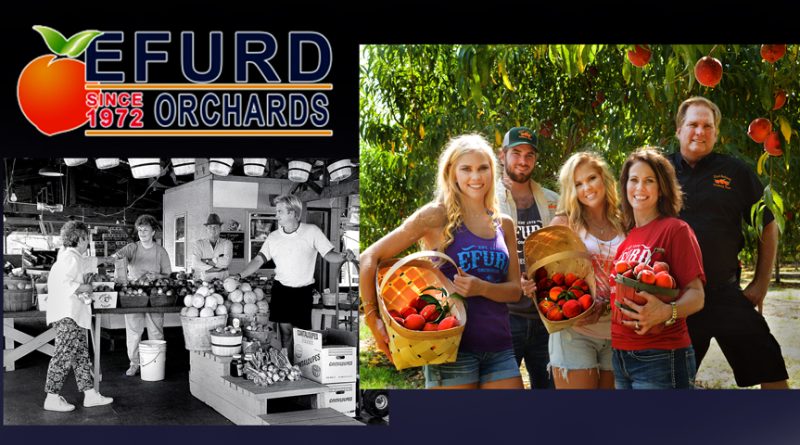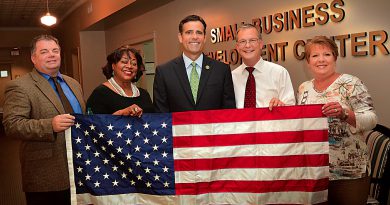Camp County families built East Texas Peach Capital
Above photos, means the same now as 31 years ago, there’s work from daylight to dark at Efurd Orchards, where the family peach shed’s now a Camp County landmark on U.S. 271. Photo at left, pictured in the summer of 1994, third, fourth and fifth from left are Sandra and John Hart Efurd and their son, Greg.
From East Texas Journal, June 1994
Pittsburg, Texas – When Johnny Appleseed tramped across the west scattering apple seeds, hardy apple trees sprang up everywhere the seeds fell, so the legend goes. Growing peaches is more demanding.
The picky peach tree, better known as Prunus Persica, is the most demanding of any of the orchard fruits — shorter-lived and fussy about its soil and its temperatures.
As in any agricultural venture, the livelihood of the local peach growers is at the mercy of Mother Nature. In the summer of ’94, due to a spring freeze, pickings were slim.
Four good crops in a row had helped soften the blow, but memories of other off years lingered.
“We froze out completely in “87 and ’89,” said Sandra Efurd, whose family had been growing peaches 23 years by the summer of ’94. “We did not pick a peach in ’87 — not even one. We got a quarter of a crop in ’88.”
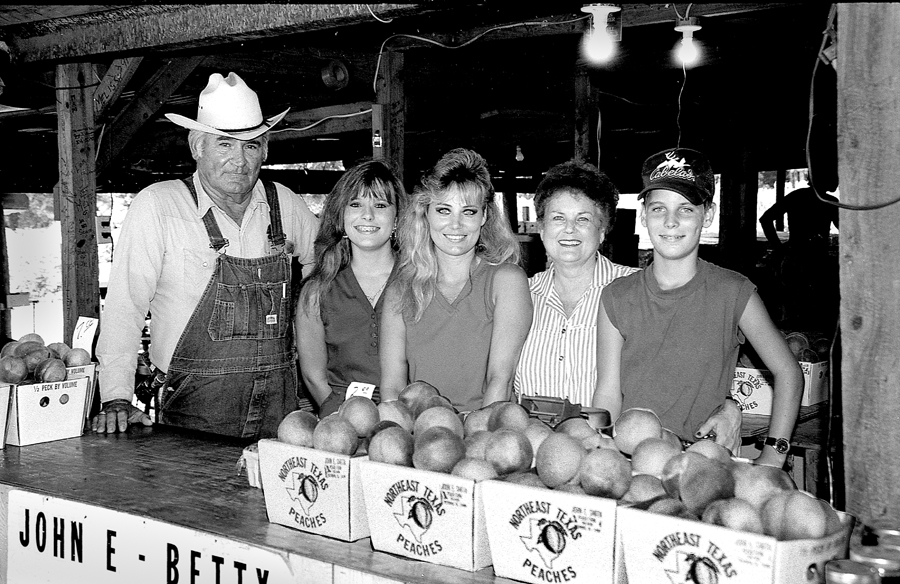
Johnny Smith, who had raised peaches for 31 years, once made 11 crops in a row — a record — from ’76 to ’86. It made up for the two “misses” in a row in ’74 and ’75.
What does it feel like to see trees loaded with pink blossoms freezing in a late-spring frost?
“Slightly depressing,” said Johnny Smith, “because you know it’ll be a year before you make any more.”
“We’d stay up all night and burn bales of hay in the orchard until sunrise,” says Sandra Efurd.
But it was usually to no avail. After the hay was consumed, the mercury would often hover stubbornly in the low 20’s just long enough for the cold to nip blooms.
The Smiths and the Efurds had a friendly competition going — a sort of dueling peach sheds — on both sides of U.S. 271 south of Pittsburg. Although both families worked year round in some phase of the business, summertime in the peach sheds was the favorite time of year for Sandra Efurd and Betty Smith because they both like people and they met some interesting ones.
“We kept a register one year,” says Betty. “That was fun. We had people from 38 states and nine countries.”
Country music star Ray Price was a regular.
Sandra’s TV idol, Dale Robertson, stopped by once when he was starring on “Wells Fargo,” but Sandra was away playing the piano at church and missed him. Her husband, John Hart Efurd, told the TV cowboy that his wife was going to be sorely disappointed that she missed meeting him. Robertson waited around as long as he could but finally had to mosey on.
She was there alone once, however, when a shiny black limousine with dark windows pulled alongside the shed, inches form where she was standing.
“It was about 110 degrees that day,” Sandra remembered. “The black glass window slid down and I felt a blast of cold air hit me in the face. There were four huge men — dressed like the Mafia — in the car.”
Without a word one of them pointed a long bony finger at a basket of peaches. She handed him the peaches, took his money, the window went back up and the limo rolled away. She didn’t work alone anymore after that.
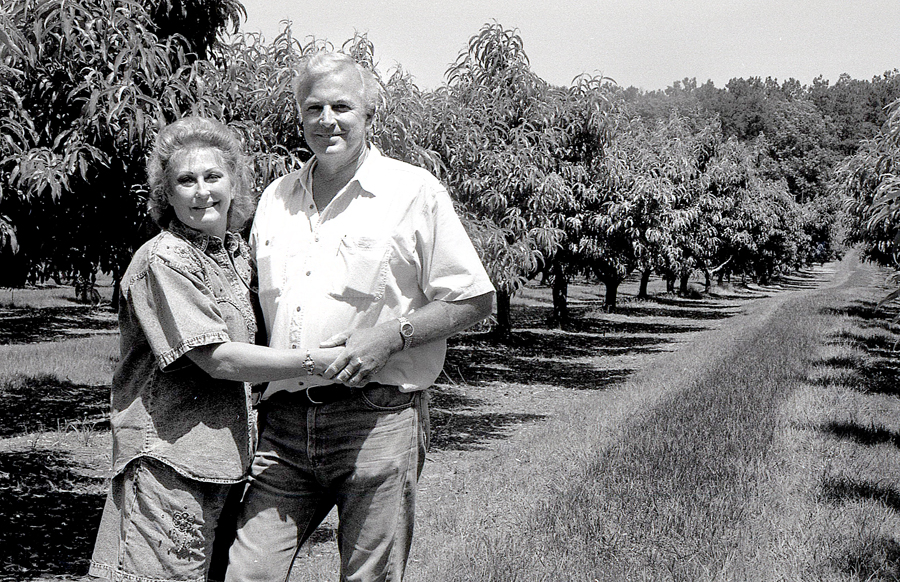
Roger and Sally McPeak had the largest orchard in terms of acreage and also the youngest trees. In 1994 they planted 90 acres of new trees east of town on Texas 11 in addition to their 40 acres of producing trees. The rows and rows of tiny trees stretched away forever.
Peach picking begins in May.
When the fruit comes off the limb with an easy twist, it’s ready.
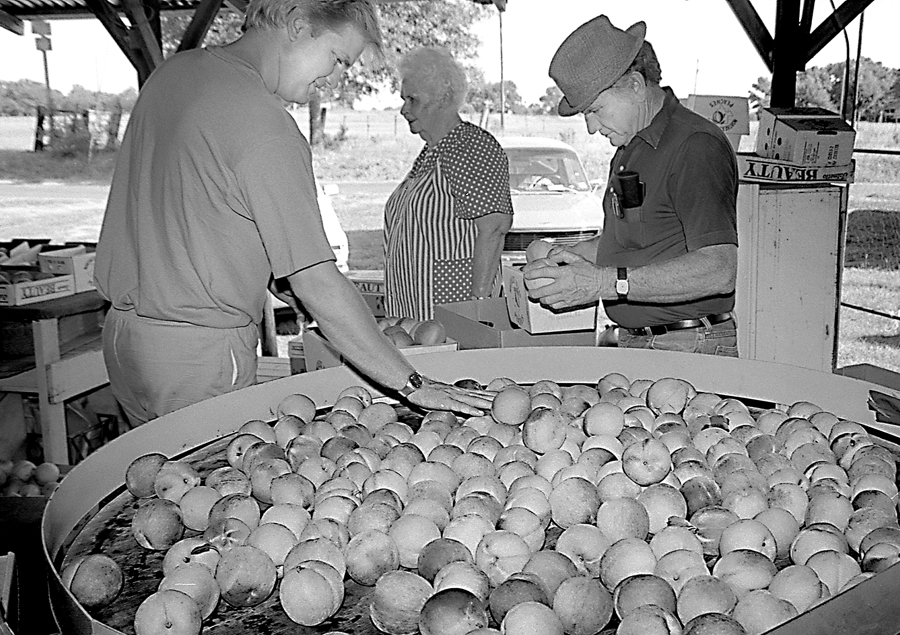
From the orchard peaches go to the shed where they’re washed, graded by size. The perfect peaches, called the “ripes,” are automatically separated by size onto round tables where they were labeled “jumbos, # l’s or #2’s.” The imperfect ones were culled but sold for other purposes.
The culls are sold for freezing and to make jellies and jams; when people kept hogs, rotting fruit was sold to those fattening hogs.
Many varieties of peaches with names that sound like race horses are grown here — Candor, Coronet, Sentinel, Red Globe, Sun Prince, Carry Mac, Spring Gold, Red Haven, Loring and Majestic.
The varieties ripen at different times from May to August. The ripening times overlap so that they never run out. Early peaches were cling (which means the peach flesh clings to the seed), then semi-cling, and after June the rest are freestone.
“Later peaches were sweeter because they had longer to get the sunshine,” Johnny Smith said. “Sun and soil are what sweeten the peaches.”
Too much rain is more of a threat to the crop than too little. “Peaches are a dry weather crop,” Sandra Efurd said. “In a dry year they don’t get as large but they’ll be sweeter.”
The Smiths, who sold all of their peaches from their peach shed, said their most popular peach is the Loring variety, which ripens around the 4th of July. Betty learned from a customer that peaches could be successfully frozen whole in their skin. She would bring out a bowl of softball-size frozen Lorings from last year’s crop. Thawed slightly, the peaches prove to be luscious and dripping with sweetness. The difference between tree ripened peaches and those in the stores, picked green, is the difference between a sun-ripened tomato and the paper-mache kind — there is no comparison.
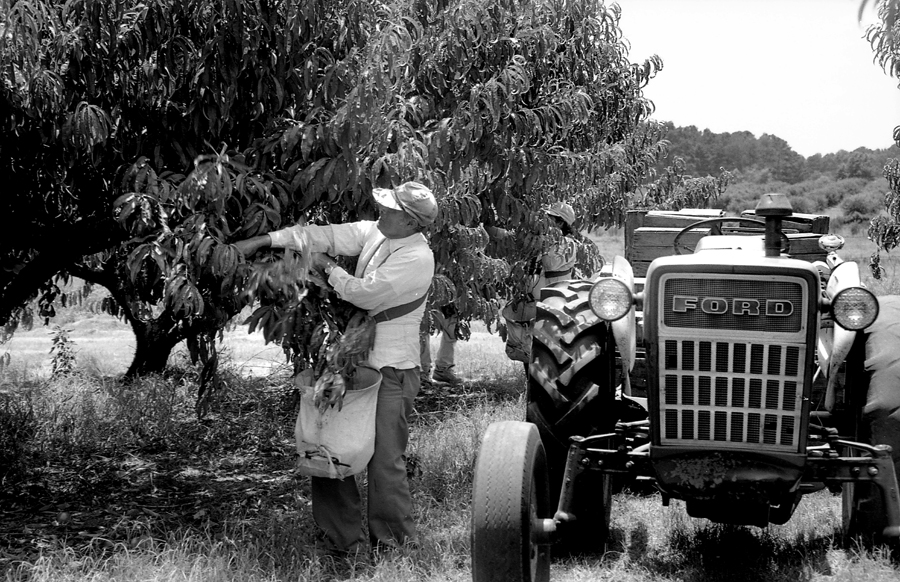
“We try to pick them when they have the best flavor for the customer. Johnny worked hard at that,” said Betty.
As soon as the season was over in mid-August, the local growers continued the year round job of care, feeding and maintenance of their trees. The East Texas climate, so conducive to growing fruit, also favors the spread of pests and disease, so the trees must be sprayed.
Trees are pruned in winter. It is necessary to prune the trees because once a peach is harvested, the section of branch on which it grew will never fruit again. New growth will produce next year’s crop. The tops of the trees are also heavily cut back to admit light to the lower inside of the tree.
Like all living things, the trees require food to grow, so they are fertilized in early spring. Peach trees have a life span of 15 to 20 years. In a good year a peach tree will yield about four bushels of fruit. After they reach their prime, they begin to go down in production and eventually have to be replaced.
“I’ve worn out two or three sets of trees in 31 years,” says Johnny Smith. “They’re just like people — you never know which ones are going to die.”


